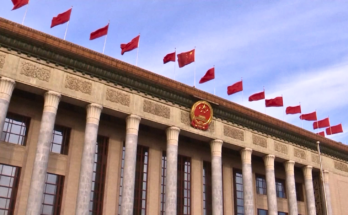Guy Dauncey says we can dig ourselves out of the accumulating mountain of private debt but a lot needs to change.
The Paradox of Debt is a new book by American businessman, venture capitalist, and secretary of banking and securities for the Commonwealth of Pennsylvania, Richard Vague. His analysis of the causes and troubling consequences of the great debt explosion that began in the 1980s is essential reading for every businessperson, economist, politician, and financial journalist – but his analysis and his solutions don’t reach deep enough.
Ever since the 1780s, the global economy has been climbing a staircase of debt. Economic growth and debt are synonymous, since almost all growth is debt-financed. Without debt, there would have been no economic growth, and no escape from the grinding poverty of the medieval period.
It is understandable that debt should keep pace with investments and economic growth, measured in Gross Domestic Product (GDP). Private debt rises in peacetime and falls during wars. Government debt rises during wars and falls in peacetime. Until the 1980s, this was pretty much the case, but since 1981 global debt has been on a roll, reaching $230tr – 230% of global GDP. In the US, it has climbed to 294% of GDP, with similar increases in the UK, Japan, China, India, and France, and to a lesser extent in Germany, which is protected by its strong exports. Between 2001-2021, while global GDP doubled, global debt tripled. What’s going on?
The claim by Conservatives and Republicans that government deficits cause inflation simply reveals how little they understand about how economies work.
Public debt is not the problem – at least, not yet. It’s currently at 85% of global GDP. Public debt is financed by the sale of bonds, and since every bond purchaser must withdraw money from another account to buy the bonds, there is zero impact on the money supply. The claim by Conservatives and Republicans that government deficits cause inflation simply reveals how little they understand about how economies work. As Vague makes clear, if high government debt caused inflation, there would have been frequent bouts of it over the past 40 years. Inflation is caused mostly by external shocks to supply chains, such as the Arab/Israeli war and oil embargo in 1973, and the Ukraine invasion in 2022. It gets amplified when businesses use the fog of inflation to do some profiteering, hoping no-one will notice, and when workers need a pay-rise to keep up. It’s tough to see how raising interest rates will solve these problems.
It’s the rapidly growing private debt that’s the problem, currently at 145% of global GDP, and rising. Private debt is created by banks and shadow-banks whenever they issue a loan. Making loans is how banks make their profits, so they are on the look-out for every opportunity to do so.
It’s not all private debt that’s the problem. Vague makes the valuable distinction between ‘Type 1 investments’, which are used to generate something new, such as a house, or a business, and ‘Type 2 investments’, which are used to buy an existing asset such as a business, real estate, or stocks. Since 1983, Type 1 debt has more or less tracked the growth of GDP. Type 2 debt, by contrast, has grown at 1.5% the rate of GDP, and now represents 70% of all private investments. This is where the problem lies.
Vague’s rule of thumb, based on his reading of history, is that when the ratio of private debt to GDP in a major developed country increases by 15%-20% in 5 years or less, rising to 150% of GDP or higher, a financial crisis or calamity is likely. With so much money being spent on interest payments, there’s less money to spend in stores and restaurants, causing demand to fall and investors to pull their money out. This usually happens, as Vague believes, when regulators are dominated by risk-takers, and risk-managers are ignored.
So what changed things, in the early 1980s? Vague does not delve into this, but it’s no secret. The neo-liberal approach to business, the economy, and the world finally succeeded in pushing the pragmatic Keynesians off the stage. Neo-liberal economists kid themselves that they are scientists of the natural laws of economics, which operate best when governments back off and private entrepreneurs can invest and trade with minimal tariffs, barriers, or regulations. It’s an ideology that is very appealing to business-people, since it justifies unrestrained profit-making.
First, to protect the planet from further abuse, governments need to adopt a taxonomy of debt, classifying every loan as red, amber, or green, as the European Union has begun to do. Red-listed loans, which add fuel to the climate and biodiversity crisis, should be banned. Amber loans, which are neither red nor green and which include financialisation loans, should pay at least 5% interest, and gain no tax benefits. Green loans, which build a zero-carbon ecological civilisation, should pay 1% interest, and receive tax benefits. The most critical planet-saving loans should be underwritten by the central bank.
Next, we need a surge in the formation of public, community, and cooperative banks, enabling people and businesses to transfer accounts away from banks whose primary focus is shareholder gain, not the wellbeing of the planet or the common good.
Thirdly, to tackle the surging inequality, we could have preferential interest rates based on income and wealth. If you are buying a first home and your income and wealth are sufficient, you should pay 1% interest. If you are upgrading to a more expensive home, your interest should be 5%. If you are buying a second home, your interest should be 10%. Governments know our incomes, making this plausible, and as soon as wealth taxes are implemented, they will know our wealth.
Fourthly, we need to consider Mondragon, in the Basque country of northern Spain, where 74,000 workers – most of whom live in Spain – collectively own their own successful cooperative businesses. In the Mondragon economy, there is no paradox of debt, and no debt crisis. All debt is productive Type 1 debt, and interest on loans goes straight back to the workers through their shared ownership of their bank, Caja Laboral. This challenges Vague’s central premise, which is that growth in debt is perpetual, and an unavoidable feature of the modern economy. It may be a feature of a capitalist economy, where the creation of debt in search of shareholder gain is normal, but it is not a feature of a cooperative economy.
Fifthly, every nation or regional economy can launch a debt-free community currency, as the Austrian town of Wörgl did in the 1930s; as Switzerland did in the 1930s with the WIR Economic Circle which is still going strong; and as Sardinia did in 2009 with the Sardex exchange. This provides home-grown interest-free digital credit that enables businesses to trade on the basis of mutual trust, just like the WIR, and is now being duplicated in many Italian communities; and as many other communities are doing around the world.
Finally, to remove the massive overhang of accumulated debt, which will be a burden on the transition out of capitalism and into a cooperative economy, we will need a debt jubilee. Vague floats the idea that the US Federal Reserve could create “perpetual money” to pay down debt by buying “a non-interest-bearing instrument with no maturity”, which is code for “free money”. The Federal Reserve can indeed do this. It has been doing it for 15 years under the guise of quantitative easing, fueling real estate and stocks price inflation.
Economist, Steve Keen, has a stronger proposal. He suggests (for the US) that the Treasury work with the Federal Reserve to create $24tr in fiat money to replace that much debt. Every adult resident over 15 would be given $100,000. “Those who had bank debt would be required to reduce it by that amount. Those who were debt-free, or whose debts were less than $100,000, would be required to buy newly-issued corporate shares, the revenue from which would be used to cancel corporate debt and replace it with equity.” As well as debts being cancelled, millions of Americans would acquire corporate shares, and there would be an equivalent fall in corporate debt.
In addition to clamping down on the dreaded labour unions, the neoliberals liberated finance, removing barriers set up to separate safe main street banking from speculative investment banking. The explosion in Type 2 debt since the 1980s is a direct consequence of financialisation. Instead of investing in productive enterprises, which might bring a 5% return, investors began investing in hedge funds, which would borrow to buy a company, load it up with the debt, strip its assets, and aim to sell it on within five years for a 10-15% profit. The accumulation of Type 2 debt included many other kinds of financial engineering, such collateralised mortgage obligations; collateralised debt obligations; derivatives; commodities speculation; and share buy-backs, boosting their value.
Before 1940, whenever an accumulation of private debt crashed an economy, governments generally let it happen, regardless of the consequences for ordinary people. After 1940, following Keynesian principles, governments intervened to prevent a crisis from getting out of hand, investing in welfare states that provided support at times of hardship, and increasing public debt to give the economy a counteracting boost.
Today, 50% of Americans have difficulty paying a $400 emergency expense, and 20% are unable to pay any additional expense at all. In Canada, 50% of people can’t pay more than $200 for an emergency expense.
In the 2000s, however, governments faced pressure not to take on more debt, so something different was needed to right an economy threatened with a crash. Central bankers had to come to the rescue. Historically, almost all new money has been created by ordinary bank lending. But over the past two decades, while bank debt created just 35% of new money, central banks created 65%. As Vague says, “As an economy’s sector gets more heavily laden with debt, it becomes more reliant on central bank activity to create new money.” In consequence, the annual supply of newly-created money rose from $16tr in 2001 to $82tr in 2021, and central bank balance sheets (the sum of their created money) rose to $41tr.
Where did most of the new money go? Into stocks and real estate, creating a self-feeding spiral of surging prices, since borrowing to buy assets increased the price of the assets. Since the 1980s, the net value of stocks and real estate in America has risen from 238% of GDP to 456%.
Central bank-created money does not generate debt, since it does not require any borrowing, but it does fuel inflation in stocks and real estate, and it does increase inequality, fuelling resentment and support for populists like Donald Trump. Today, 50% of Americans have difficulty paying a $400 emergency expense, and 20% are unable to pay any additional expense at all. In Canada, 50% of people can’t pay more than $200 for an emergency expense. As Vague says, trickle-down economics is correct – but it is debt that has been trickling down, not wealth.
He makes no reference to the climate crisis, the biodiversity crisis, or the global food and resources crises, which are all being driven by our collective addiction to consumption and economic growth.
So what’s to be done? Before we get there, I have to note that Vague presumes increased economic growth to be a good thing: “Only when households and businesses are freed from excessive debt can they contribute vigorously to economic growth.” He makes no reference to the climate crisis, the biodiversity crisis, or the global food and resources crises, which are all being driven by our collective addiction to consumption and economic growth. They are not on his radar, even though they threaten to pull our whole civilisation down.
Vague’s solutions are that governments should monitor debt growth in every sector, and extend regulation of money and debt to shadow banking entities, where there is often an appalling abandonment of sound lending policies. He has various recommendations for a debt jubilee to reduce student debt, mortgage debt, and small business debt. He urges the need for the reform of bankruptcy law, and for steps to remove the bias in taxation that encourages more debt. He also sees the need to reverse America’s trade deficit by more investments in renewable energy, and in training for young people.
In general, he underplays the role that central banks have played in backstopping the crises caused by excessive debt, downplaying central bank money-creation as “open market operations”. That description makes them appear quite innocent, even though when banks and businesses get cash from the central bank’s purchase of their stocks or bonds, they tend to reinvest it in real estate and stocks.
None of this addresses the real cause of the surge of private debt since the 1980s: selfish neoliberalism, which says “greed is good”, and gives permission for investors, bankers, and shadow bankers to pursue whatever schemes they can dream up to increase shareholder value, even if it destroys main street businesses, workers’ incomes, and indeed the whole planet. This is the cancer at the heart of our economies, which needs serious surgery to remove it. A debt jubilee might be great, but it tackles the symptoms of the cancer, not the cause (see box: How can we remove the “greed is good” cancer in the heart of our economies?)
This talk about debt may feel dull and dry, but it is absolutely essential. It goes to the core of our world’s troubles. Vague has started the debate. Now we need a follow-up that digs deeper into the paradox of debt, and shows how it can be resolved through the transition to a cooperative economy.



